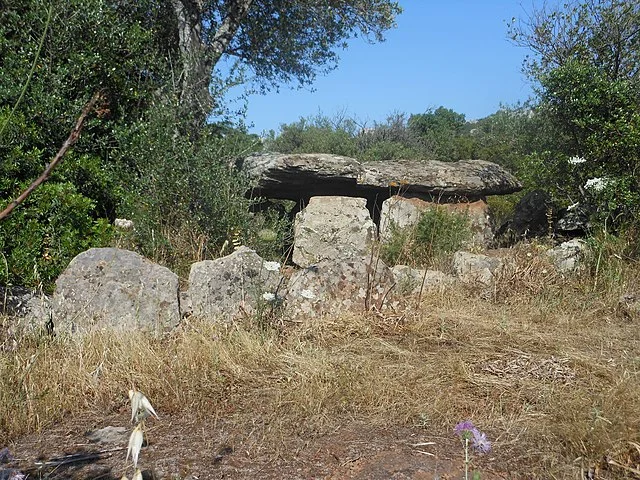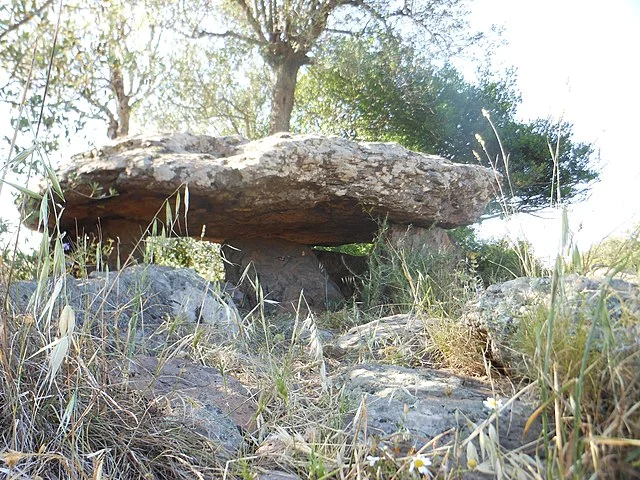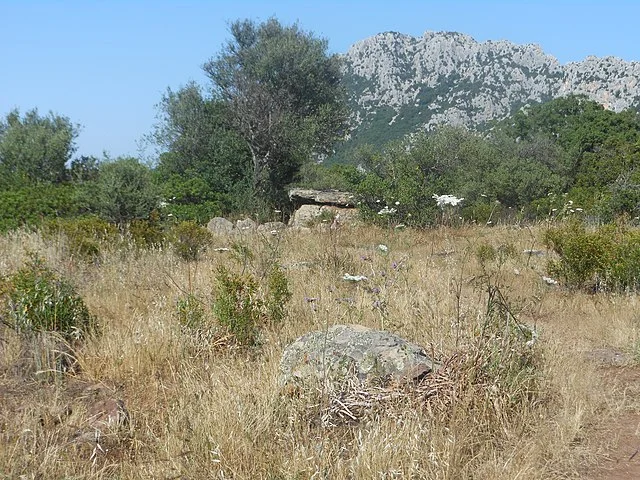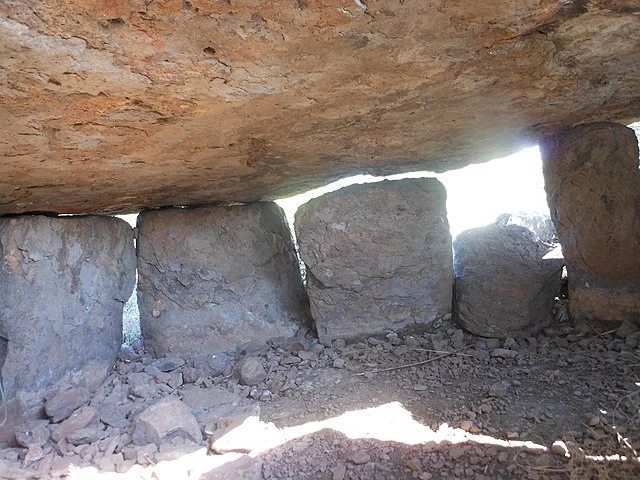The Motorra Dolmen is an ancient megalithic structure located near Nuoro, in Sardinia, Italy. It dates back to the early Bronze Age, around 3000 BC. Dolmens like Motorra were used primarily as tombs, a common feature in Neolithic and early Bronze Age societies. This dolmen is part of a broader tradition of burial monuments found throughout Sardinia and the Mediterranean region.
Get your dose of History via Email
Architectural Features

The Motorra Dolmen consists of a large horizontal slab, or capstone, supported by vertical stones known as orthostats. The capstone creates a roof over the burial chamber, typical of dolmen construction. Unlike more elaborate dolmens, Motorra’s simplicity highlights the early phase of megalithic architecture in Sardinia. The structure is located in an elevated area, possibly chosen for ritual or symbolic purposes, as it would be visible from surrounding valleys.
Purpose and Use
Motorra Dolmen was likely a collective tomb. Multiple individuals from the same community were buried here over time. The bodies were probably placed in a crouched position, common in burials of this period. Rituals related to death and the afterlife were central to the culture that built these structures. The dolmen likely served not only as a grave but also as a symbol of the community’s connection to its ancestors.
Dolmens in Sardinia

Motorra Dolmen is one of many found in Sardinia. The island is rich in prehistoric monuments, including the well-known Nuragic structures. Dolmens predate the Nuragic civilization and belong to the earlier phase of Sardinian history. They are linked to similar megalithic traditions across Europe, especially in places like France and the British Isles. These shared features suggest widespread cultural exchanges during the Bronze Age.
Excavations and Research

Archaeological excavations of Motorra Dolmen have provided insight into the burial practices of early Sardinian societies. While the dolmen itself has been subject to weathering, some artifacts such as pottery fragments have been discovered nearby. These finds help researchers understand the daily lives of the people who used the dolmen. The lack of elaborate grave goods suggests a relatively egalitarian society, where burial monuments were more about collective identity than individual wealth.
Preservation and Importance
Today, Motorra Dolmen is a protected archaeological site. While it remains exposed to the elements, efforts have been made to preserve its structure. It is an important site for understanding the development of early megalithic cultures in the Mediterranean. The dolmen attracts visitors interested in prehistoric archaeology and Sardinian history.
Motorra Dolmen serves as a reminder of the complex societies that existed in Sardinia long before the Roman conquest in the 3rd century BC. This ancient tomb connects modern Sardinia with its distant past, offering valuable insights into early human society and culture.
Source:

